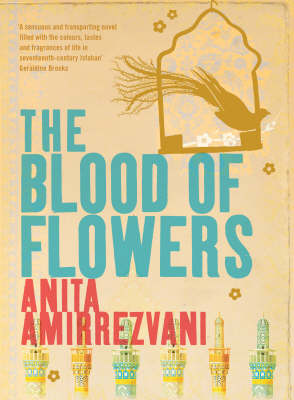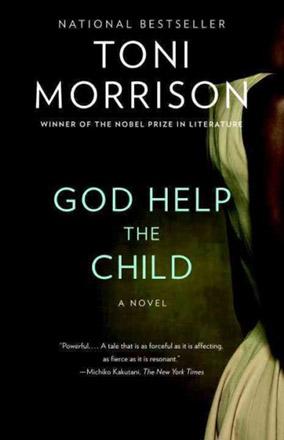You are here
Isfahan: City of beauty and peril
By Sally Bland - May 17,2020 - Last updated at May 17,2020

The Blood of Flowers
Anita Amirrezvani
London: Headline Publishing Group, 2008
Pp. 457
This is an amazingly rich and polished historical novel, all the more admirable because it is Anita Amirrezvani’s first book. In “The Blood of Flowers”, a young girl tells her own coming-of-age story in 17th century Iran.
Her story is a tribute to Isfahan, the legendary city where architecture and craftsmanship reached new heights during the reign of Shah Abbas, most especially its signature craft, carpetmaking. Her story attests to the importance of superstition, religion, and kinship in everyday life at the time.
It also reveals the prevailing power relations between men and women, between the city and the countryside, and between the rich and the poor, which mostly work to the disadvantage of the narrator, until she learns to harness her impulsiveness.
Born in a small, poor, but largely self-sufficient village in southern Iran, the narrator is a cherished only child raised by loving parents who had to wait fifteen years for her birth. The year she turns fourteen, considered marriageable age at that time, a particularly bright and ill-boding comet appears in the skies, and wise men begin issuing all sorts of dire predictions about the moral decline and calamities it portends. Soon enough, her father dies unexpectedly, and she and her mother are left without resources or remaining kin in the village. Most crucially, she will have no dowry.
Sinking into poverty, her mother decides they should seek out their only kin, her deceased husband’s half-brother, Gostaham, in Isfahan. Though he is obviously wealthy, they are treated no better than servants. Yet, the girl is deeply impressed by Isfahan’s glory: “Every surface of every building glittered with ornament. It was as if a master goldsmith had selected the most flawless turquoise, the rarest of blue sapphires, the brightest yellow topaz, the purest of diamonds and arranged them into an infinity of shimmering patterns that radiated colour and light”. (p. 39)
The girl eyes an opportunity in their new circumstances, since Gostaham is a skilled carpet designer and master of the shah’s carpentry workshop. Having learned basic carpet weaving in the village, she is eager to develop her skills and lift her and her mother out of poverty and dependence. Gostaham recognises her talent and ambition and is eager to help her, but his greedy wife is reluctant and tries to thwart her at every turn.
Eventually the girl is pressured into a temporary marriage which leads her into entanglements from which there is no easy exit. While her impulsiveness sometimes opens new horizons, at other times it leads to disaster. She is forced into a delicate balancing act between her desires and values, and what is forced on her by poverty and lack of social standing.
On the one side is her pride, creativity, and ambitions; on the other, the need to have a roof over her and her mother’s heads, not to mention food. Eventually, this struggle leads her to maturity, but one keeps turning pages, eager to know if she will ever reach her goals of a real marriage and recognition as a master carpet weaver and designer.
Amirrezvani, who was born in Iran but grew up in the US, writes with great literary skill, human compassion, and a keen eye for detail. She embellishes her tale with lavish descriptions of architecture, clothing, and carpets, and also with stories within stories, told in the tradition style and related, if obliquely, to the on going plot of the novel.
Her story shows the opposing sides of reality. Not far from the opulence of Isfahan’s mosques, palaces, public squares and bazaars, there are quarters of abject poverty, disease, and hunger. (The girl and her mother spend time in both.) The story debates the pros and cons of sigheh, temporary marriage. Even Isfahan’s treasured carpetmaking is subject to scrutiny, as the narrator notes the health hazards it entails, including permanent deformities: “Even the youngest knotters suffered aching backs, bent limbs, tired fingers, exhausted eyes. All our labours were in the service of beauty, but sometimes it seemed as if every thread in a carpet had been dipped in the blood of flowers”. (p. 410)
Still, it is the sense of beauty that prevails, not only of the grand monuments and lovely carpets but also the beauty of the human soul. In a particularly interesting author’s note and interview following the novel, Amirrezvani describes the extensive research she undertook, as well as her motivation for writing the book. She explains that in the thirty years of broken relations between the US and Iran, “knowledge of each other at an ordinary, human level has steadily decreased… One of my main concerns was to provide a more nuanced view of Iran than we normally see in the news”. (p. 443)
Amirrezvani also explains something that one wonders about in the course of the story: “The narrator of this novel is purposely not named, in tribute to the anonymous artisans of Iran”. (p. 437)
Related Articles
The Valley of AmazementAmy TanNew York: HarperCollins, 2013Pp.
In “Summer with the Enemy”, the characters are paramount. None of them are typical, much less fit into any stereotype; each opens up a different world of perception. The author, Shahla Ujayli, dedicates her book to “the Raqqa of my memory”, and her characters’ personalities, each one uniquely moulded, are her main vehicle for recreating the city as it was in the 1980s — seemingly isolated but actually with many ties to the outside world.

















